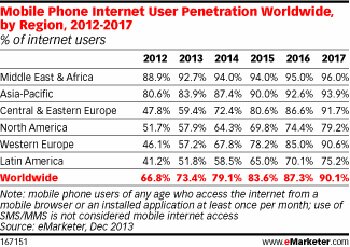The Middle East represents a rich but surprisingly under served region in the field of e-commerce. Whilst the share  of connected population rises across the region, lack of sufficient tools for digital payment hinders faster growth in electronic retail purchases. According to a report by yStat.com, B2C e-commerce currently accounts for less than 1% of total retail sales in the region. For comparison, the figure is 1.7% in neighboring Turkey and around 6% in the US.
of connected population rises across the region, lack of sufficient tools for digital payment hinders faster growth in electronic retail purchases. According to a report by yStat.com, B2C e-commerce currently accounts for less than 1% of total retail sales in the region. For comparison, the figure is 1.7% in neighboring Turkey and around 6% in the US.
The potential for e-commerce is widely encouraged, with the report claiming “a boom in ME e-commerce is expected” of around 20% over the next few years. However, there are significant obstacles to the ME actually realizing this potential, which will continue to prevent this growth if not addressed.
One, as the report acknowledges, is the lack of fast and widespread mechanisms of online payment. It’s mainly because connection infrastructure and availability is still very low, and needs considerable investment in order to create a boost in internet usage. This perpetuates the second obstacle of low adoption of online retail channels and digital payment tools by local businesses, currently prevalent.
At the moment, e-Commerce in the Middle East is headed by UAE, Saudi Arabia, and Qatar who account for approximately half of all e-sales in the region, according to the “Middle East B2C E-Commerce Report 2014″. The product categories producing more revenue in online sales include consumer electronics, computers, and jewelry (including watches).
Mobile Commerce
Mobile is often the most common mode of connection to the internet in the region, with high smartphone and tablet  penetration. This illustrates the exciting potential for mobile commerce, even higher than desktop e-commerce, which is currently untapped. Currently, m-commerce accounts for 10% of all B2C e-commerce in the Middle East, reads the report, predicting it to double by 2015.
penetration. This illustrates the exciting potential for mobile commerce, even higher than desktop e-commerce, which is currently untapped. Currently, m-commerce accounts for 10% of all B2C e-commerce in the Middle East, reads the report, predicting it to double by 2015.
eMarketer’s latest research confirms that the mobile is the first means for internet access for most users in the Middle East and Africa, with over 90 percent usage rate since the beginning of 2013, placing them on the top of the list of mobile phone internet user penetration.
Estimates for 2014 is in line with the up-trend, predicting a 94 percent of mobile internet penetration for the region (that is, connecting to the net at least once a month via mobile phones), a slightly higher figure compared to 2013’s 92.7 percent which was already by far the highest in the world.
On average, 79.1 percent of internet users worldwide will be mobile phone internet users in 2014 and it won’t be until 2017 that most regions enjoy penetration rates at and over 90 percent.
However, as a percentage of mobile phone users, the Middle East and Africa still lags behind North America, eMarketer report says. Just over half of mobile phone users in the region will go online with their devices in 2014, while almost two-thirds of mobile phone users in North America will do so.
